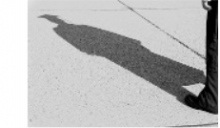 Antoine Desigaux PhD defense
Antoine Desigaux PhD defense


PhD defense of Antoine DESIGAUX from the TIMC BIOMECA team on tuesday, the 27th at 10am:
« Development as well as mechanical and structural characterization
of an anisotropic elastomer reinforced by cellulose microfibrils. »
-
Place : salle Chartreuse du laboratoire CERMAV, 601 rue de la chimie, 38400 Gières.
Jury :
- Grégory CHAGNON, Professeur, Université Grenoble Alpes, Supervisor
- Laurent HEUX Directeur de Recherche, Centre National de la Recherche Scientifique, Co-supervisor
- Sonia MOLINA-BOISSEAU, Maîtresse de Conférence, Université Grenoble Alpes, Co-supervisor
- Pierre Dumont, Professeur, Institut National des Sciences Appliquées de Lyon, Reporter
- Jean-Benoît Le Cam, Professeur, Université de Rennes, Reporter
- Frédéric Bossard, Professeur, Université Grenoble Alpes, Examiner
- Marie Rebouah, Docteure en Sciences, Michelin, Examiner
- Matthieu Fumagalli, Maître de Conférence, Université Claude Bernard Lyon 1, Examiner
- Yoshiharu Nishiyama, Directeur de Recherche, Centre National de la Recherche Scientifique, Examiner
 Keywords
Keywords
Elastomers ; Anisotropy ; Cellulose ; Mechanics ; Structure ; Mullins effect
 Abstract
Abstract
This work is part of the research on the reinforcement of elastomeric materials with high aspect ratio fillers. The aim is to orient the reinforcing fillers in a direction to obtain anisotropic mechanical properties, in order to better understand the relationship between structure and mechanical properties of initially anisotropic elastomers. Cellulose microfibrils (MFC) have particularly suitable characteristics, i.e. high elastic modulus, two nanometre dimensions, high aspect ratio and high specific surface area. To enable the formation of strong bonds with the matrix, a coupling agent was grafted onto the surface of the MFCs. The grafted MFCs were then incorporated into a Styrene Butadiene Matrix (SBR), and a fabrication protocol was developed to orient the MFCs uniaxially in SBR films. Several MFC fractions between 10 vol.% and 20 vol.% were used. Specimens were cut at 0° (INIT0), 45° (INIT45) and 90° (INIT90) to the main direction of orientation of the MFCs. Tensile tests revealed a hyper-viscoelastic, initially anisotropic behaviour with the presence of a strong Mullins accommodation. An increase in the slope of the stress-strain curves is observed the more the fibres are initially aligned towards the tensile direction. At the same time, a decrease in stress at break and strain at break is observed. The different initial orientations of the MFC also highlighted the anisotropy of the Mullins effect in cyclic tests. X-ray diffraction measurements under strain showed the rotation of the MFCs, initially misaligned with respect to the tensile direction, during deformation. Different rotation regimes of the MFCs were observed for the different initial orientations. In particular, a much greater rotation was observed for the INIT90 specimens than for the INIT45 and INIT0 specimens.
